Supermarine SPITFIRE LF Mk XIV
RB175 (code DW-L)
Saint-Rieul (22)
(contributors : Philippe Dufrasne, Jean-Michel Martin (ABSA 39-45), Daniel Dahiot (ABSA 39-45)

610 Squadron Royal Air Force (County of Chester)

Pilot : Flying Officer COLGAN Brian Thomas
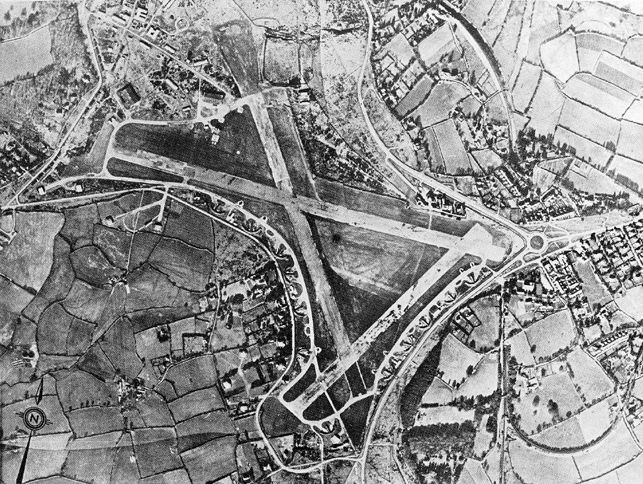
Harrowbeer airfield, Devon, England
(Source : © RAF Harrowbeer interest group - http://www.rafharrowbeer.co.uk/).
THE STORY
Saint-Rieul, Côtes d'Armor, Sunday, 28th May, 1944. Around 5.30 pm. Crash of Spitfire Mark XIV flown by Flying Officer Brian Thomas "Butch" Colgan of 610 (County of Chester) Squadron of the RAF based at RAF Harrowbeer in Devon (southwest England). Spitfire RB175, coded DW-L.
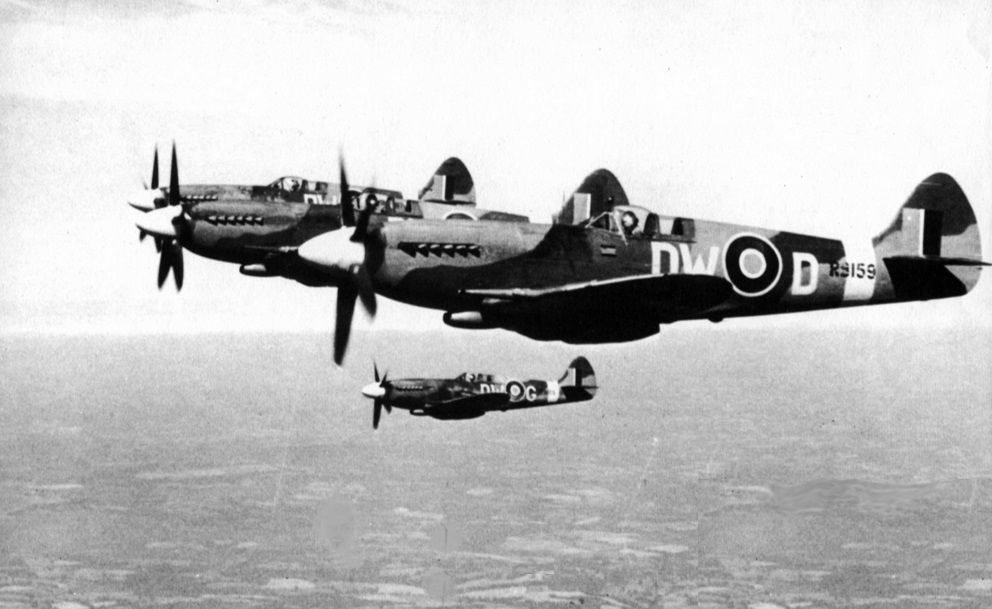
Four Spitfire in flight ; in the foreground the RB159 'DW-D' of Squadron Leader R A Newbury
Photo : author unkown
On this day of May 28, 1944 the first mission of the squadron was early in the morning. Flight Lieutenant Madden and Pilot Officer Scaman had taken off at 5.50 am for a reconnaisance over the Aber-Wrac'h in northern Brittany, with an extension above the region of Brest. At 7.20 am, they returned to their base.Everything went without any problems. A second mission was planned by the Commanding Officer for the end of the afternoon. Specific missions called '' Rhubarb '' for all RAF squadrons during WWII. This one was number 259. These missions had no targets decided in advance. The enemy targets to look for were at the opportunity. The airmen had to destroy, or at least attempt to do so, any enemy convoy on road or rail. But also possibly any German aircraft in flight or parked on an airfield.
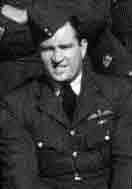
Squadron Leader Richard Newbery
(Source and author unkown)
Four pilots were selected. Their commanding officer was Squadron Leader Richard Newbery. Newbery was a highly experienced pilot, Squadron Leader (he remained in that position until 1945) and was later awarded the DFC (Distinguished Flying Cross). He became famous for having destroyed nine V1 flying bombs which had been launched from Northern France by the Germans towards english cities. Flight Lieutenant Shepherd was his second in command. They were together with Flying Officers McKinley and Colgan. All were experienced pilots, with many flying hours, including air combat and ground attacks. After take off at 5.00 pm, the four aircrafts joined up over the Channel. The crossing to North Brittany was very fast. (The Spitfire Mk XIV had a top speed of 465 mph). Weather conditions were good. The Squadron Leader Newbery gave orders by radio to the other pilots when seeing the coast. 'Take care as the enemy can strike at any moment'. After a loop approach to Brest, the group began to follow the railway towards Rennes. At the same time, they checked the roads to identify any military vehicles. Suddenly, on reaching Landivisiau, white smoke was seen rising into the sky, indicating the presence of a railway train. Immediately, the four British airmen prepared to attack with great caution, because the enemy rail convoys were heavily protected, often by Flak guns mounted on railway wagons.
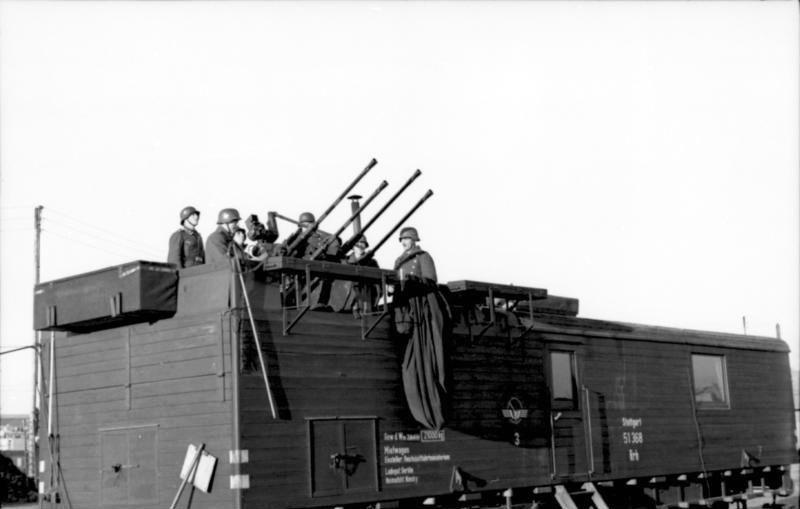
© Bundesarchiv, Bild 101I-621-2944-26A / Doege / CC-BY-SA 3.0
Frequently, these wagons were located at the rear of the train and sometimes on the front behind the locomotive. The four aircraft hit the train firing all their weapons then described a wide loop, while climbing to escape enemy fire. The target was hit and the train stopped in the country. The four Spitfires climbed and then dived on the convoy and fired with all their weapons, then they made a large loop, while gaining altitude again to escape enemy fire. The target was hit. The train was stopped in the open country. The leader informed the return to the flight indicating that the objective had been reached. The flight continued, guided by the railways, which led towards Guingamp then Saint-Brieuc without difficulty. Just after Lamballe, a new smoke meant the presence of a train heading towards Rennes. The Squadron Leader Newbery renewed his orders, recommending the greatest caution. Here again the convoy was certainly protected by mobile artillery. Arrived at a place called "Le Cas Rouge", in the town of Plestan, they attacked. The fire on the convoy was intense. The power of the four aircrafts was enormous. A fuel wagon, located in the middle of the convoy, exploded in a gigantic flash of fire. The rear Flak wagon fired with its four guns.
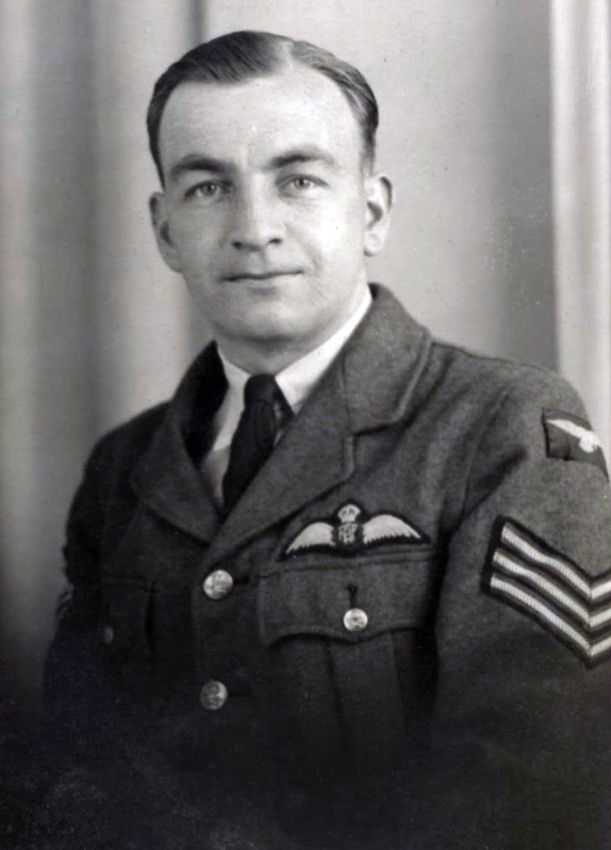
Flying Officer COLGAN Brian Thomas
© Colgan family
Ajouter un commentaire